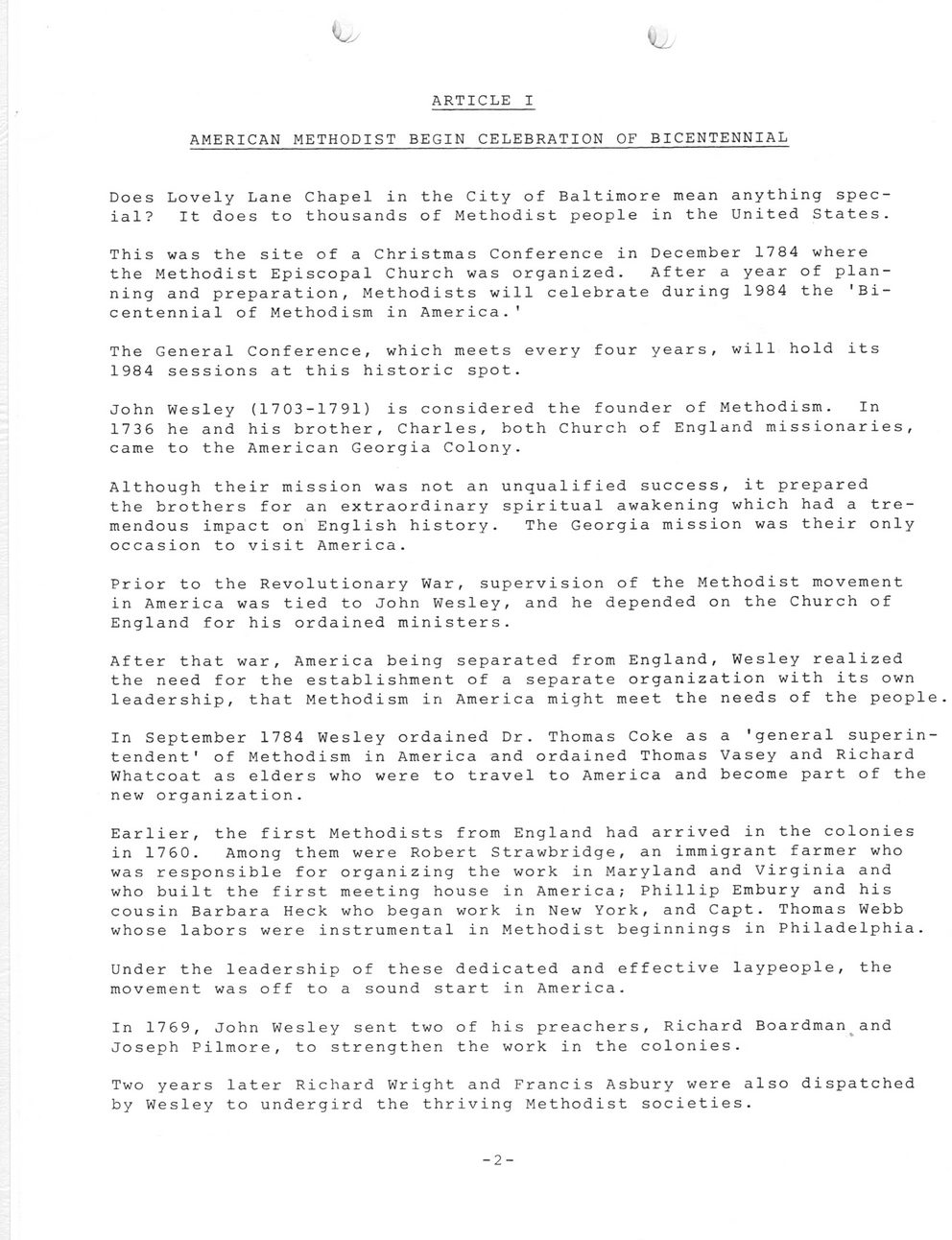This text was obtained via automated optical character recognition.
It has not been edited and may therefore contain several errors.
ARTICLE I AMERICAN METHODIST BEGIN CELEBRATION OF BICENTENNIAL Does Lovely Lane Chapel in the City of Baltimore mean anything special? It does to thousands of Methodist people in the United States. This was the site of a Christmas Conference in December 1784 where the Methodist Episcopal Church was organized. After a year of planning and preparation, Methodists will celebrate during 1984 the 'Bicentennial of Methodism in America.' The General Conference, which meets every four years, will hold its 1984 sessions at this historic spot. John Wesley (1703-1791) is considered the founder of Methodism. In 1736 he and his brother, Charles, both Church of England missionaries, came to the American Georgia Colony. Although their mission was not an unqualified success, it prepared the brothers for an extraordinary spiritual awakening which had a tremendous impact on English history. The Georgia mission was their only occasion to visit America. Prior to the Revolutionary War, supervision of the Methodist movement in America was tied to John Wesley, and he depended on the Church of England for his ordained ministers. After that war, America being separated from England, Wesley realized the need for the establishment of a separate organization with its own leadership, that Methodism in America might meet the needs of the people. In September 1784 Wesley ordained Dr. Thomas Coke as a 'general superintendent' of Methodism in America and ordained Thomas Vasey and Richard Whatcoat as elders who were to travel to America and become part of the new organization. Earlier, the first Methodists from England had arrived in the colonies in 1760. Among them were Robert Strawbridge, an immigrant farmer who was responsible for organizing the work in Maryland and Virginia and who built the first meeting house in America; Phillip Embury and his cousin Barbara Heck who began work in New York, and Capt. Thomas Webb whose labors were instrumental in Methodist beginnings in Philadelphia. Under the leadership of these dedicated and effective laypeople, the movement was off to a sound start in America. In 1769, John Wesley sent two of his preachers, Richard Boardman^and Joseph Pilmore, to strengthen the work in the colonies. Two years later Richard Wright and Francis Asbury were also dispatched by Wesley to undergird the thriving Methodist societies. -2 -

Main Street Methodist Church Document (013)